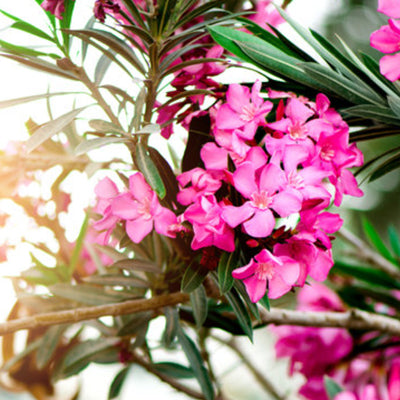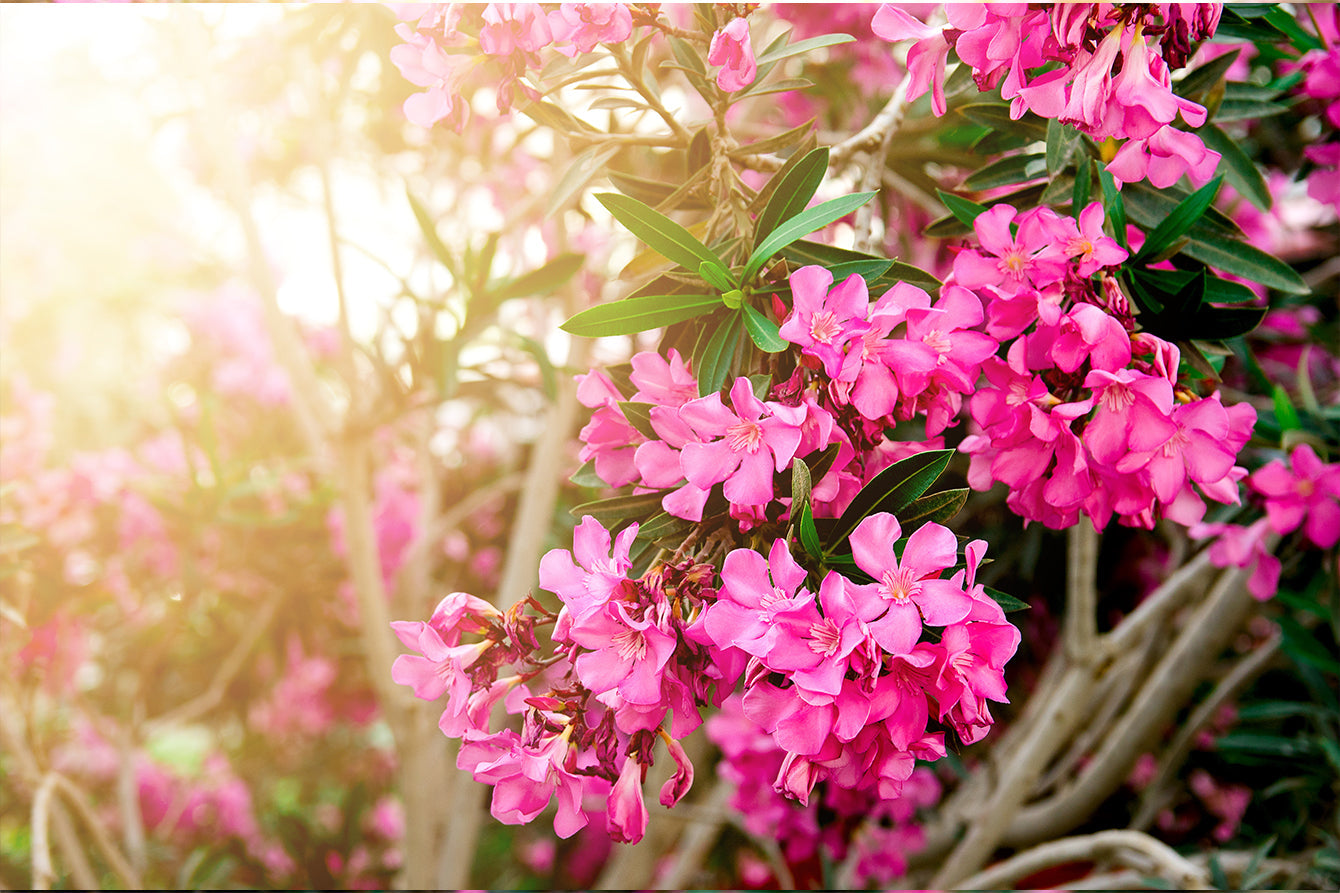Oleander creates die-hard fans once planted and it is easy to see why. The flowers are BEAUTIFUL! And it has a long bloom period, lasting from early summer to early fall; some areas that are frost free report year-round blooms. It thrives in some of the hardest growing conditions found in the States, bringing beauty to coastal and desert landscaping. This shrub is fast growing and can be used as a border tree or wind break. It is also an evergreen, so you won’t lose the foliage throughout the winter months. It can handle salt spray and gentle coastal winds. Low maintenance is also on the “check list” needing very little pruning and fertilizer. Did we mention it was fast growing? The Oleander can grow up to 3 feet in one growing season! If this sounds too good to be true, well, there is a catch…
She gets a bad rep, because, well, I’m just going to tell it to you straight: every aspect of the plant is poisonous. BUT, before you go closing your browser and wondering why you should plant this in your yard, hear me out! I don’t go around eating the trees and plants in my yard, do you? Now, children and pets are a completely different story, and yes you should be cautious if your children and pets are young and/or will stick this plant in their mouths. Yes! by all means don’t plant this in your yard. But for the rest of you, who this does not apply to, embrace the beauty and the low maintenance! We highly encourage you to educate yourself on every plant you purchase and we are here to answer any questions you may have regarding the Oleander.
What You Will Need:
Sun: Full sun; will tolerate partial shade
Soil: Widely adaptable to many soils; prefers well-draining soil.
Water: It is quite drought tolerant but will benefit greatly from a watering schedule until established. One-two times a week is all that is necessary.
Pruning: Before pruning, cover skin and wear gloves as the plant can cause skin irritations; Do not burn any part of the oleander tree as it is toxic. Prune only dead and damaged limbs when needed; a light pruning in the early spring will prompt new growth, on which the new flowers will bloom. As a bonus, if you prune oleander after the first round of flowers fades, the new growth may reward you with even more blossoms.
Fertilizer: Only when soil is extremely poor and only the first few growing season. Once plant is established it should not require any additional nutrients.
USDA Growing Zones: 8-11.
Ready to add this beautiful plant to your yard? Shop now.


